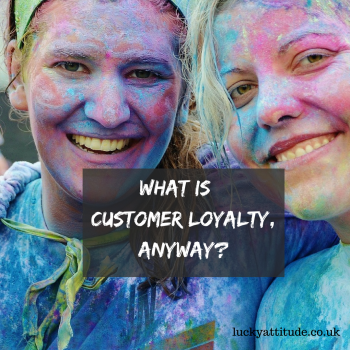How To Turn Customers Into Brand Advocates?

Is customer loyalty still a thing?
Think about it:
You go to your local grocery store every day, because it’s nearby and convenient, not because you are loyal to it.
You probably wouldn’t even mind if, one day, it was replaced with another store.
Customer loyalty, then, is not about repeat purchases.
It’s about willingness to recommend a company to friends!
Recommending something to a friend is bigger barrier to overcome, because trust is involved and you don’t want to compromise your reputation.
As a result, it is difficult to come by a true brand advocates in today’s over-saturated customer-pleasing economy.
Customers expect immediate problem-solving
The modern buyer expects immediate responses across any channel – chat, social, email, phone.
I would always pick a service provider that offers a real-time support and troubleshooting over a cheaper, but a clunkier competitor.
Did you know that your customers can automatically get quotes and place orders without the need for sales support? Making it smoother process for customers.
Salesbuildr is a web-based autotask quoting tool and self-service storefront that deeply integrates with Autotask PSA and a large selection of European distributors. It enables your team to create great-looking quotes in minutes while automating large parts of daily workflows.
Millennials will happily pay for convenience & avoid unnecessary headaches.
However, it’s still difficult for businesses to ensure pleasant & smooth customer service that spans chat, social, email, and phone.
Kayako, a leader in customer support software, helps companies make sense of cross-channel customer data & allows the customer support agent to respond immediately on any channel. They’ve been around for 17 years, but are still extremely well-priced for what they offer.
In today’s convenience economy, customer service doesn’t have to be boring & transactional.
It has the power to delight, but most importantly – it drives loyalty.
Great customer experience is your competitive advantage & your opportunity to turn your customers into brand advocates.
How to measure customer loyalty?
The primary indicator of brand loyalty is calculated by the Net Promoter Score (NPS), which is based a simple question:
“How likely are you to recommend our company/product/service to a friend or a colleague?”
The scoring for this answer is often based on a 0 to 10 scale. Survey tools like JotForm Survey Maker allows you to calculate NPS of your product” as you can see in the below or something around it.
Net Promoter Score (NPS) is based on the basic understanding that all customers can be divided into three categories:
1. PROMOTERS (score 9-10) are loyal enthusiasts, who will refer others, fuelling growth.
2. PASSIVES (score 7-8) are satisfied but unloyal customers
3. DETRACTORS (score 0-6) are dissatisfied customers, who can damage your brand a through negative word-of-mouth.
To determine your official NPS score, take the percentage of Promoters and subtract the percentage of Detractors. That number is your Net Promoter Score.
The Net Promoter Score focuses solely on how likely you are to recommend a brand to your friends, in other words – it focuses on word-of-mouth.
According to research by Bain & Company, positive word-of-mouth is a good indicator of company’s future growth.
On average, an industry’s Net Promoter leader outgrows its competitors by greater than two times.
How to increase The Net Promoter Score?
If you want to increase NPS, you need to have better word-of-mouth.
Word-of-mouth is directly linked to NPS, so investing in WOM teams to run a customer advocacy programme, will result in greater NPS scores.
How to design a customer advocacy programme?
Existing customers are the biggest untapped opportunity for many companies.
Customer advocacy is about identifying and activating the passion for your brand among the people, who already love your brand.
Your loyal customers have the information you need to spread and the power to share your brand in an authentic way.
Brand advocates will share positive sentiments with their community—information that is far more credible than any company-led self-congratulatory advertising.
How to design a customer advocacy programme, step-by-step:
1. Invest in a customer advocacy team
Marketing traditionalist and other “Mr-Know-It-All’s” aren’t a good fit for word-of-mouth teams. To succeed in this new marketing discipline, you’ll need to be curious & nimble social marketer, who puts their customers first.
2. Develop a measurable programme
When developing the programme, start from the end-goal: what do you want to achieve? Try to say it in the shortest and clearest way possible. Then work your way backwards: what do you need to do in order to achieve the goal?
Often it’s easier to divide the projects into smaller milestones. Each milestone goal being S.M.A.R.T (specific, measurable, attainable, relevant, and timely).
Some examples of specific customer advocacy goals:
– Grow an Instagram following by 60% over the next 3 months
– Grow a programme sign-ups for 80% in the next 6 months
– Increase website click-through-rate by 50% in the next 5 months
– Increase your brand’s share of voice by 60% in the next year
3. Find the right brand advocates
Once your goals are set, you will need to find your brand advocates, get them on-board with the programme, and grow excitement about your initiatives.
If your brand is active on social media, it’s likely that your fans are talking about your brand already.
You can also set up social media alerts for your industry-related terms, brand name or relevant hashtags to find people, who are raving about you on social media.
These days it’s usual for ordinary people to have an influence online. You also might find that many of your customers run blogs, or popular social media accounts, which can help to amplify your brand-message to thousands of people.
4. Give them the platform
Once you’ve found your audience and gathered some information about their likes and dislikes, you can design the incentives that are valuable to them.
Get them into the same online room and encourage them to go from like to love, with your brand cheering them on and giving them passion-worthy access and assignments.
Demonstrate how taking part in the program will benefit them.
You can support their interest by giving them a publication platform like blog or community, so they can tell their story.
The platform must give them recognition and access to special events and products; or maybe even access to important people and information. It’ll all depend on your resources and your customer needs.
[The difference between advocacy programmes and influencer relations, is that customers aren’t paid to promote a brand. Monetary transaction would damage the depth of the relationship.]
Conclusion: Word-of-mouth in the social age
People love to share.
Now, thanks to the free web, our thoughts and feelings can spread through social media faster than fire in the field.
Now customers do online research and consider advice from their peers before they make purchasing decisions.
One Tweet, one Facebook post, one blog post can reach thousands of people within minutes.
This combination of people talking and a new democratic medium has helped create marketing based on word-of-mouth to spread even faster.
So, connect with consumers, stop just collecting them.







